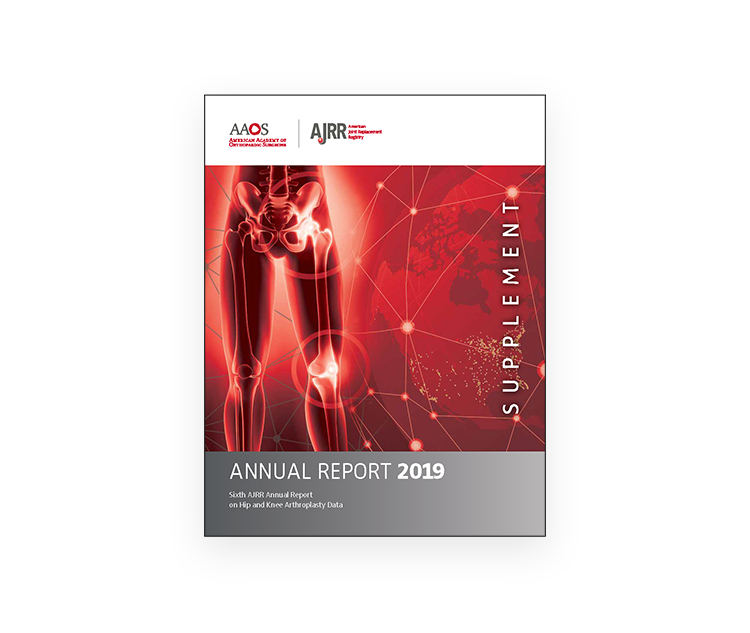Download the AJRR 2019 Annual Report Supplement
Data Shows Continuity of Hip and Knee Arthroplasty Trends; Reveals the Value of More Complete Information for Outcomes of Primary Arthroplasty
The AJRR 2019 Annual Report Supplement provides demographic information and outcomes from the more than 1.5 million hip and knee arthroplasty procedures performed from 2012 to 2018. This year represents the first time the AJRR has been able to complete device specific survivorship curves utilizing Medicare claims data. In addition, results offer a more complete picture of patient populations within the procedural reported data. Methodology for analyses detailed reflect a consensus-driven approach determined by multiple stakeholders.
“The inclusion of Medicare claims data has given us access to more robust and complete patient information which allows us to investigate timely topics including the role of dual mobility bearings in total hip arthroplasty and cementless fixation in total knee arthroplasty,” said Kevin J. Bozic, MD, FAAOS, MBA, AJRR Registry Oversight Committee Representative. “The level of understanding we are able to gain from these enhanced AJRR data, including clinical, implant related, patient-reported outcomes, and now administrative claims, provides unique insights into the factors that influence outcomes for patients who undergo hip or knee replacement surgery.”
AJRR represents approximately 32% of all hip and knee procedures performed in the United States. However, the representativeness of the AJRR population was previously unknown. To address this uncertainty, the representativeness of the AJRR population was assessed by comparing characteristics of the total joint arthroplasty (TJA) procedures in the AJRR with the National (Nationwide) Inpatient Sample (NIS) database.
The supplemental report also addresses:
- Hip Arthroplasty Constructs – According to the data, the majority of the variation in the hip device-specific survivorship curves appeared to occur within one year of the primary procedure. Early failure is typically a result of infection, dislocation, or periprosthetic fracture, which may or may not be related to the implant itself.
- Knee Arthroplasty Constructs – Unlike the hip device-specific survivorship curves which showed some divergence in the first year, the knee device-curves showed very little divergence for both posterior stabilized and cruciate retaining constructs.

